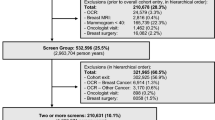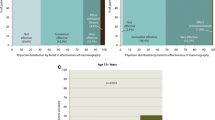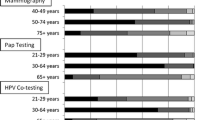OBJECTIVE:
Women are more likely to receive breast and cervical cancer screening if they see female physicians. We studied whether this is due to differences between male and female physicians, or to differences in their patients.
SETTING:
Large midwestern, independent practice association style of health plan.
DESIGN:
We surveyed male and female primary care physicians matched for age and specialty and a stratified random sample of three of each physician's women patients. Physicians reported on their practice setting, their attitudes and practices regarding prevention, and their comfort and skill with various examinations. Patients reported on their sociodemographic characteristics, their attitudes and practices regarding prevention, and their preferences for physician gender. Claims data were used to calculate mammography and Pap smear screening rates for the physicians
PARTICIPANTS:
We studied 154 female and 190 male internists and family physicians and 794 of their patients.
MEASUREMENTS AND MAIN RESULTS:
We compared the responses of male and female physicians and their patients and used multivariable analysis to identify the patient and physician factors that accounted for the differences in screening rates between male and female physicians. Female physicians were more likely to ask new patients about components of prevention, to believe in the effectiveness of mammography, to feel more personal responsibility for ensuring that their patients received screening, and to report more comfort in performing Pap smears and breast examinations. Patients of female physicians were more educated and less likely to be married, but did not differ in other sociodemographic characteristics. They had similar attitudes and practices regarding prevention, except that patients of male physicians were more likely to smoke. Significantly more patients of female physicians preferred a female for some component of care. In multivariable analyses, practice organization, patient preference for a female physician, and prevention orientation of female physicians accounted for up to 40% of screening rate differences between female and male physicians for Pap smears, and 33% for mammography.
CONCLUSIONS:
Differences in beliefs of male and female physicians and patient preference for a female provider contribute independently to the higher rate of breast and cervical cancer screening by female physicians.
Similar content being viewed by others
Author information
Authors and Affiliations
Rights and permissions
About this article
Cite this article
Lurie, N., Margolis, K., McGovern, P. et al. Why Do Patients of Female Physicians Have Higher Rates of Breast and Cervical Cancer Screening?. J GEN INTERN MED 12, 34–43 (1997). https://doi.org/10.1007/s11606-006-0005-3
Issue Date:
DOI: https://doi.org/10.1007/s11606-006-0005-3




